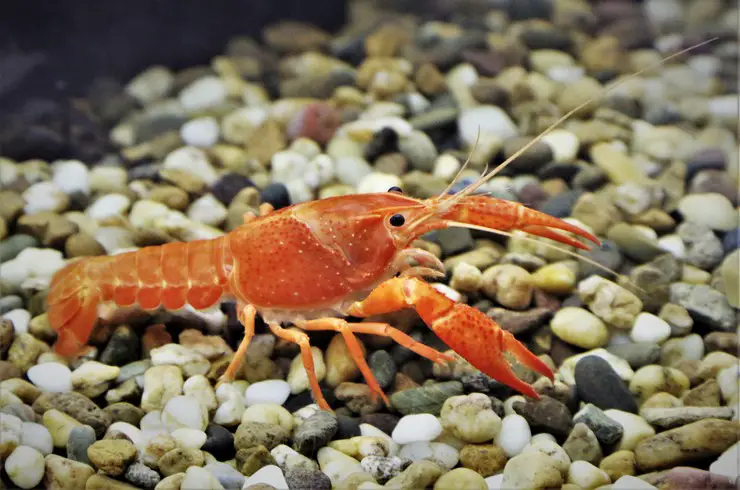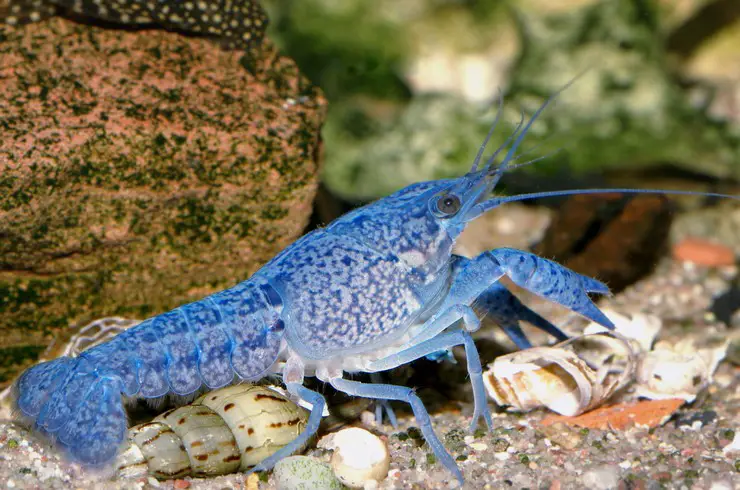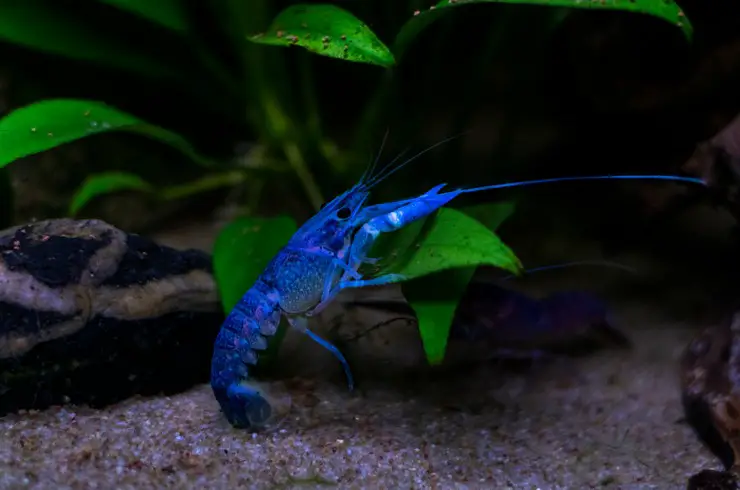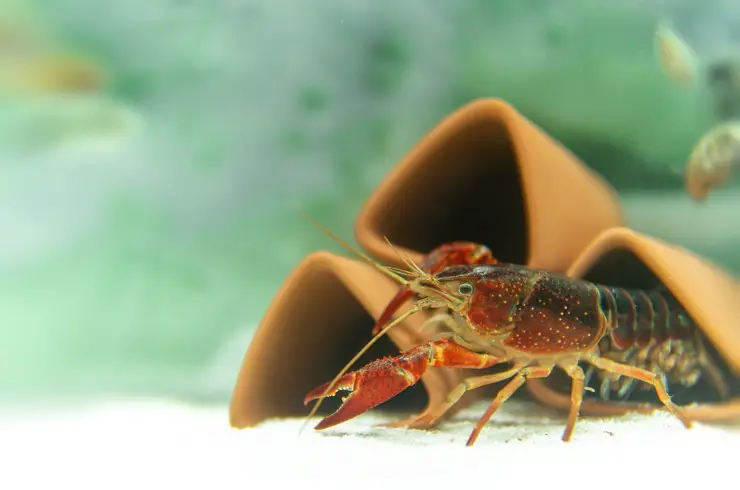The history of keeping crayfish in home aquariums is not as long as that of fish. The widespread distribution of these arthropods began only about half a century ago. Initially, they were turned on by enthusiasts who wanted to have some unusual animal at home, while not requiring serious care. But then the popularity of crayfish began to grow rapidly. And now, in terms of prevalence, they already breathe in the back of their “younger brothers” – shrimps. Let’s take a closer look at these amazing representatives of the arthropod type.
General information
All crayfish kept at home are representatives of the wide order Decapod crayfish (Decapoda). The group got this name from the number of walking legs – there are exactly five pairs, and the first of them has been modified into claws.
Lovers usually keep crayfish from the southern latitudes of Australia, North and South America. They are better adapted to life in warmer water and have beautiful coloration. The question often arises, can ordinary crayfish be kept in an aquarium? This is possible, but it must be borne in mind that local crayfish are cold water, so you will have to think about how to cool the water in the aquarium so that the temperature is comfortable for them.
Most aquarium crayfish have a body length of 15-30 cm, which means that the aquarium will need a fairly spacious one. Small containers can only contain dwarf species (for example, Mexican orange crayfish). An interesting fact: most of the information about the life of crayfish in captivity was obtained in fish farms because many of them are an important object of aquaculture, they are grown for the sake of valuable meat, which sometimes tastes as good as even large sea crustaceans.
Why are crayfish increasingly becoming desirable pets? There are a number of reasons for this:
- Crayfish is easy to care for. All they need is a suitable tank size, plenty of covers, good filtration, and aeration. There is no need to create any specific conditions for these arthropods;
- You will never have problems feeding your crayfish. These animals are omnivorous and are excellent orderlies of the aquarium because they are able to eat any pasture;
- Crayfish exhibit amazing behaviors. For example, many of them love to rearrange the decorations in the aquarium to their liking. And if you are the owner of a group of crayfish, you can watch exciting battles for territory or females;
- Aquarium crayfish often have bright and attractive body colors;
- Finally, many types of crayfish get along well with fish, which allows them to be kept in shared aquariums.
Appearance
The general structure of aquarium crayfish is almost identical. The body consists of two sections: the massive cephalothorax and the abdomen.
The first section is covered with a dense shell (carapace), under which all the vital organs of crayfish are located. In the front part, there are sensory organs: movable eyes on stalks, short antennae – antennae, and long antennae (organs of touch and smell). Walking legs are attached to the cephalothorax, which serves as an organ of the movement. There are five pairs of them in crayfish, but the very first carries claws that help crayfish dig up the ground, cut off pieces of food, and fight rivals. In the lower part of the cephalothorax are the jaws, which capture and hold food, as well as the real jaws.
The abdomen in crayfish is mobile and consists of several segments. Below are the swimming legs – pleopods. In males, they are used for swimming and mating (the first pair), and in females, they serve as an attachment point for eggs. The constant movement of the pleopods ensures continuous ventilation of the eggs. The abdomen ends with a wide caudal fin. In case of danger or meeting with an unequal enemy, crayfish can use a sharp tail reduction to raise a column of dust and quickly retreat.
The body length of aquarium crayfish is different and depends on the specific species. The smallest representatives barely grow up to 5 cm, while the large ones can reach 15-30 cm in length.
The color of crayfish is extremely diverse: they can be bright blue, orange, red, marble, etc. The color of the crayfish body is highly dependent on the environment, comfort, and nutrition.
The lifespan of aquarium crayfish is 3-5 years.
Habitat
The habitat of aquarium crayfish is quite wide. They can be found in the reservoirs of Central, North and South America, Australia, New Guinea, Madagascar.
Typical crayfish habitats are slow-flowing, stagnant bodies of water or swamps. They prefer secluded spots near the coastline. They hide between snags or dig holes in the ground.
Some species, such as marbled crayfish, have become invasive in some regions of the planet after being released into natural waters by aquarists.
Care and maintenance
The aquarium for keeping crayfish is selected, first of all, based on the maximum size of the animals. If we are talking about the Mexican dwarf crayfish, then 40-60 liters will be enough for it. But Yabbi the destroyer will need at least 100. The aquarium should be equipped with a cover so that the arthropods cannot escape.
It is best to choose aquariums with a maximum bottom area because this is where arthropods spend most of their lives. Aquarium crayfish, for the most part, are very fond of digging up the soil. Therefore, it is best to stop at medium-sized rounded pebbles with a diameter of 2-3 mm, so that as little turbidity as possible rises into the water, and crayfish itself does not experience discomfort during the molting process. It is advisable to make a larger layer of soil.
Careful attention must also be paid to the decoration of the aquarium. It is very important that there are as many different shelters as possible in it. The most popular options are ceramic and plastic pipes, grottoes, driftwood, coconut halves, ceramic pots, etc. Shelters will allow you to zone and reduce conflicts if you have multiple crayfish living in the same tank. But most importantly, they are hiding places for crayfish in the most dangerous period of their life – after molting.
Many crayfish in nature – lovers sometimes go on land, where they find food for themselves. Therefore, it is recommended to create small islands of land for them. A piece of driftwood sticking out of the water is perfect for this. Just install it so that crayfish cannot get out of the aquarium, because without water they will quickly die.
Despite the fact that crayfish in nature often live in marshlands, they are quite sensitive to water quality. They should be settled only in aquariums with an established balance. It is very important to ensure proper filtration. It is most often recommended to use powerful internal filters. The thing is that the hoses of external filters can become a “ladder” for the crayfish, along which it can easily get out of the aquarium. Good filtration is very important, as crayfish tend to store food in reserve, which in turn can degrade water quality. The course can be mild or moderate.
Pay attention to the quality aeration of the crayfish aquarium. Especially in the summer, when the water temperature rises and the solubility of oxygen in the water decreases.
Now a few words about water parameters for the comfortable keeping of crayfish. Many (even tropical) species live in moderately warm water, so the temperature should not rise too much in the aquarium. But soft water will not work for crayfish. This is due to the fact that calcium is required for the formation of a new carapace after molting; it is not enough in soft water, which can lead to problems with molting.
Optimum parameters for keeping aquarium crayfish: T = 22-25 ° C, pH = 6.5-7.5, GH = 10-20.
Once a week it is necessary to change 20% of the water in the aquarium to prevent the growth of hazardous compounds. Tap water, which is the most commonly used water change, can be hazardous to crayfish due to its chlorine or heavy metal content. Therefore, with every change, use Tetra Crusta AquaSafe Conditioner, which instantly binds hazardous substances and makes the water fit for invertebrates.
Most types of aquarium crayfish are incompatible with living plants. They cut them off or dig them up. If you do decide to plant plants, then floating species are best suited – riccia, pistia, hornwort. You can also try hard-leaved species – anubias, cryptocorynes – but they do not always withstand the onslaught of crustaceans. Only the Mexican dwarf crayfish is completely loyal to living plants and takes root well in herbalists.
Crayfish is predominantly nocturnal.

